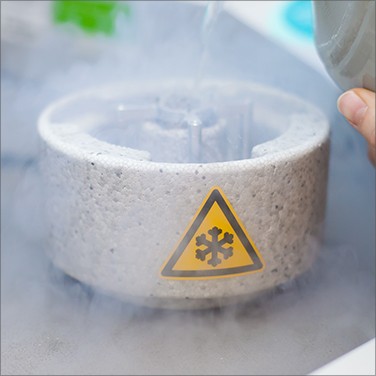Nobel Prize Awarded to Scientists for Cryo-Electron Microscopy
By Mike Howie
On October 4, 2017, the Nobel Prize in Chemistry was awarded to Jacques Dubochet, Joachim Frank, and Richard Henderson for their development of cryo-electron microscopy, which, according to the Noble Committee, “has moved biochemistry into a new era.”
Thanks to their pioneering work, scientists can now produce highly resolved, three-dimensional images of protein structures that may lead to a better understanding of biological function and the development of new therapies.
Their work has spanned decades, starting back in 1975 when Frank, a biophysicist, developed a process to combine fuzzy, two-dimensional images from an electron microscope into a sharper, three-dimensional image. While Frank was still at work on his process in the early 1980s, Dubochet, also a biophysicist, succeeded in vitrifying water around a biological sample inside an electron microscope vacuum, which allowed the biomolecules to retain their natural shapes instead of collapsing. And in 1990, Henderson, a biologist, succeeded in using an electron microscope to create a 3D image of a protein at atomic resolution, solidifying the technology’s potential and proving that electron microscopes can be used to image more than dead matter.
Revolutionizing Biochemistry
Cumulatively, this field of research has come to be known as cryo-electron microscopy. The technique is used to freeze biomolecules in mid-movement and create accurate, three-dimensional images of sub-cellular and molecular structures and reveal details that were previously impossible to visualize. Over the years, electron microscopes have been tweaked and improved to provide better images, and the desired level of atomic resolution was reached in 2013. According to the Nobel Committee’s announcement, cryo-electron microscopy has been used to produce images of “everything from proteins that cause antibiotic resistance to the surface of the Zika virus.”
Nobel Committee Chairman Sara Snogerup Linse explained that the technique is revolutionary for biochemistry. “Now we can see the intricate details of the biomolecules in every corner of our cells, in every drop of our body fluids. We understand how they are built and how they act and how they work together in large communities,” she said during the announcement.
Frank believes that cryo-electron microscopy “fills an important gap and extends the range of molecules that can be determined at atomic resolution.” He also stated that the technique has immense practical uses, though it would be years before the implications are fully understood.
